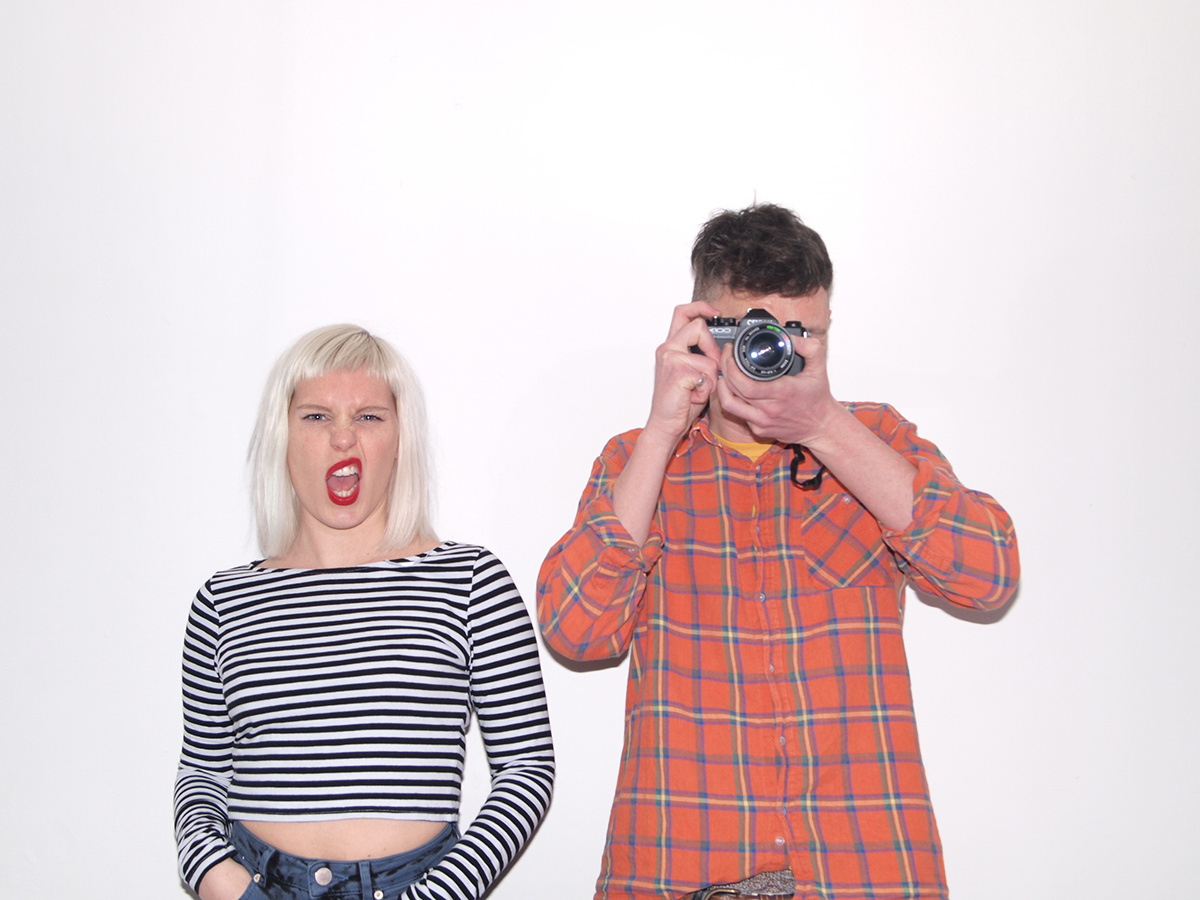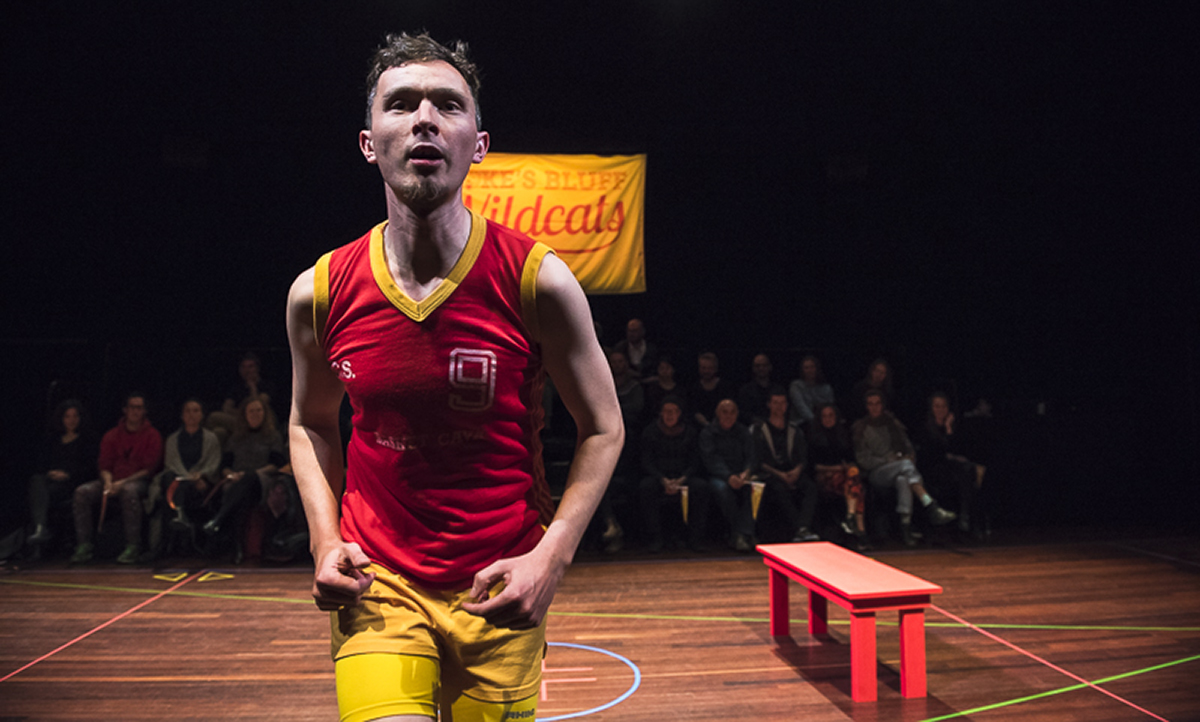
Action Hero: on a mission
American popular culture is a beast that eats itself. At some point late last century its orgy of self-celebration and self-flagellation grew so extravagant that the distinction between the two became nigh impossible to distinguish, and its global encroachment left it increasingly hard to find any position from which to secure what was once, perhaps naively, dubbed a critical perspective. It’s not surprising that Bristol-based provocateurs Action Hero (Gemma Paintin and James Stenhouse) has fallen into a giddy romance with Americana, but sometimes the object of their attention dances a few steps ahead of them.
Action Hero recently enjoyed a residency at Melbourne’s Arts House, presenting a suite of works that each engage with a different corner of US pop iconography. The first, Hoke’s Bluff, channels the tradition of high school sports movies with all of the accompanying clichés of adversity and triumph, team spirit and individual troubles. There’s a thin narrative in which a young sports star must overcome the internalised grief that causes him to choke up at pivotal points during the game, but more prominent are the reminders that this is an ur-narrative that is common across countless tellings. The sport in question keeps shifting and long periods are spent listing fictional gameplays and everytowns that may or may not exist. Characters are types. Story comes pre-ordained. When there are laughs — on the night I attended, there were many — they’re of the variety that stems from familiarity. We’ve seen all this before, again and again.
Hoke’s Bluff is not a dismantling of the sports movie. Somewhere along the way Action Hero has fallen under the spell of its target, and so what’s presented is an homage rather than parody. The challenge is that of three performers trying to match the pleasures provided by a multi-million dollar Hollywood machine, and rather than critique a contemporary myth from without or draw attention to its own internal pressures from within, the work reminds the viewer of the appeal of the thing itself while never able to be more than its faint echo. The effect is a bit like that of children wearing their parents’ clothes — funny but easily dismissed, and the ultimate reveal behind the protagonist’s trauma here is juvenile enough to take the whole work down a few notches.

Hoke’s Bluff, Action Hero, Arts House, photo Gregory Lorenzutti
But Action Hero elsewhere prove that they’re far from kids at play. Wrecking Ball takes cues from the celebrity photoshoot in which a jaded star tries to validate some sense of identity while a potentially sinister snapper maintains control of the shutter. The unfolding relationship between star and image-maker here rapidly spirals into a phantasmagoria of meta-theatrical mayhem.
The photographer and celebrity spout well-trodden clichés — she wants the shots to be her public reinvention, to reveal her real self, but the epistemological nuances of such an idea begin to render unstable the frame around the performance itself. The photographer’s camera becomes a weapon, carving off slices of its subject when she’s not ready — not real enough, or too real? — while her words start to chip away at his autonomy. Words themselves revolt when a script is passed out to the audience and props are revealed as such, so that the notion that there is anything real in any of this takes a battering.
The effect is unexpectedly unsettling. Not that this kind of meta-theatre is new — if anything, it’s a staple of Melbourne performance. But this work isn’t about pulling back the curtain on celebrity culture or the construction of public images or the artifice of theatre. Its self-deconstruction doesn’t leave behind a void but a chaotic fullness. Where Hoke’s Bluff offers little beyond its own patchwork of quotations and allusions, Wrecking Ball suggests that beneath the clichés of the popstar narrative are concerns that are terrifyingly universal, calling into question the existence of the self, the impermanence of the material world, our inability to stare too long at the blind screaming madness of the cosmos.
A pink icecream turns out to be mashed potato with a little food dye. By the end, it’s both at once, and this is an instance of Action Hero’s real genius in Wrecking Ball. Like an intellectual version of those optical illusions that leap between two states — a vase or two faces, for instance — the work is a range of things at once, yet the mind can only contemplate one at a time. It’s a rewarding and playful bit of trickery that keeps picking at the mind’s edges long afterwards.
–
Action Hero, Hoke’s Bluff, co-creators, writers, performers Gemma Paintin, James Stenhouse, co-deviser, performer Laura Dannequin, lighting design Jo Palmer, dramaturgy Deborah Pearson, additional text Nick Walker; Arts House, 24-27 May; Wrecking Ball, co-creators, writers, performers Gemma Paintin, James Stenhouse, lighting design Jo Palmer, dramaturgy Deborah Pearson; Arts House, Melbourne, 31 May – 3 June
Top image credit: Wrecking Ball, Action Hero, Arts House, photo courtesy the artists






